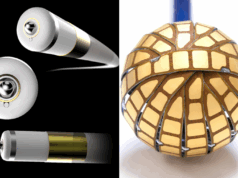A new survey published in the European Journal of Heart Failure suggests that cardiac resyncronisation therapy (CRT) does indeed reduce rates of death and re-hospitalisation among heart failure patients.
The European CRT Survey by Bogale N el al also showed that one-year follow-up most patients who had received a CRT device considered their symptoms such as breathlessness, tiredness and weakness, and oedema were better than their pre-implant assessment.
The survey a joint initiative of the Heart Failure Association and European Heart Rhythm Association of the European Society of Cardiology (ESC) gathered information on more than 2000 patients at 141 centres in 13 European countries. Its aim was to assess the effect of CRT on symptom severity, cardiovascular re-hospitalisation, and survival. The study population included subjects poorly represented in clinical trials but commonly admitted as heart failure patients including: the very elderly, those with atrial fibrillation, and those previously treated with a pacemaker or other cardiac device.
Analysis of the survey data showed that at, one year (average) follow-up, 81% reported a self-assessed improvement in their symptoms (with 16% no change and 4% a deterioration).
The survey also found that almost 25% of the subjects had died or been re-hospitalised within the 12-month follow-up period. This poor outcome, whose rate is consistent with that found in clinical trials, was directly associated with the diagnostic severity of the heart failure, the pre-existence of atrial fibrillation (or other heart disease), and the type of resynchronisation cardiac device implanted. Patients implanted with a pacing device only (CRT-P) had higher rates of mortality than those whose device had an additional defibrillator (CRT-D).
Nigussie Bogale, Stavanger University Hospital, Norway, principal author of the study, said: “This is the largest study reporting a difference in outcome between CRT-D and CRT-P. Most patients with an indication for CRT have also an indication for a defibrillator. So unless they have contraindicating co-morbidities, it is now our belief that these patients should be considered for CRT-D implantation.”
The use of advanced CRT devices has gained increasing acceptance in recent years and they are now being implanted on a large scale as an adjunct to conventional drug treatment. Indeed, some reports have described the two types of devices (CRT-P and CRT-D) as a revolution in heart failure. One important study by Moss AJ et al (N Engl J Med 2009; 361: 1329-1338) cited in the most recent guidelines on heart failure suggested implantation of an ICD was associated with a 23% reduction in all-cause mortality.
Another study by Van Veldhuisen et al, reporting in 2009, found that throughout 15 European countries the number of CRT implantations increased substantially, from 46/million in 2004 to 99/million in 2008, an increase of 115%. This was mainly explained by an increase in use of CRT-D devices. The study cited by many recent guidelines (MADIT-CRT) found that CRT-D decreased the risk of heart-failure events even in relatively asymptomatic patients (with a 34% reduction in the risk of all-cause mortality or heart failure).
This European CRT Survey now suggests that benefits of this nature in both symptoms and survival can be replicated in routine everyday practice.
However, despite the benefits and the recommendations, other studies show there is still a wide gap between those who meet the criteria for CRT and those who actually have a device implanted.









